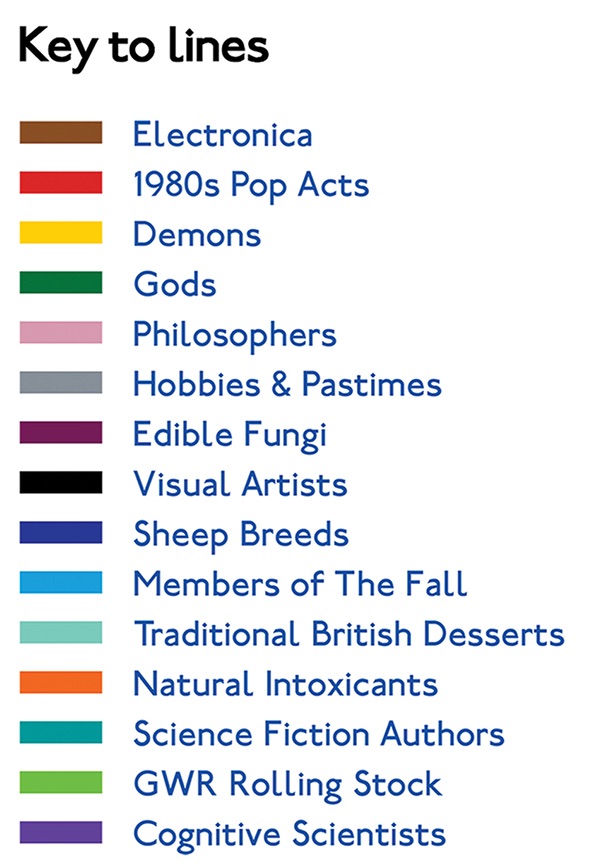The Labyrinth was a fiendish maze, created by Daedalus to contain the Minotaur. This maze was so complex that once entered none returned, visitors either lost or eaten by the beast (or perhaps both). The term 'labyrinthine' is used metaphorically to indicate something of incomprehensible complexity – much, in fact, like the micro-structure of the brain.

The human connectome project project is a global endeavour to create a wiring diagram of the brain - a map of the territory of the mind. Maps are by their nature a simplification of complexity, a re-rendering of reality into a form that becomes comprehensible and useful to the observer.
This map was generated from real human connectome data captured at CUBRIC. A minute sample of the 100,000 brain connections present in the average human mind was used to create the interconnected rail lines displayed across the representation of the brain here depicted.
The London Tube Map is both a classic piece of design and a functional representation used by millions to negotiate the real geography of the city. With a nod to The Great Bear by Simon Patterson, I have assigned stations to locations along the lines = each of these stations representing sets of people and ideas which connect and intersect.
This produces a juxtaposition of seemingly different concepts which at first may seem arbitrary, or perhaps even absurd, but which inevitably provoke the intellect to find a connection, perhaps revealing subconscious relationships and bringing them to the surface.
This map does not try to reflect the true geography of the mind, but instead reveals to us the way the mind works - creativity and problem solving arising from the connection and juxtaposition of ideas.
